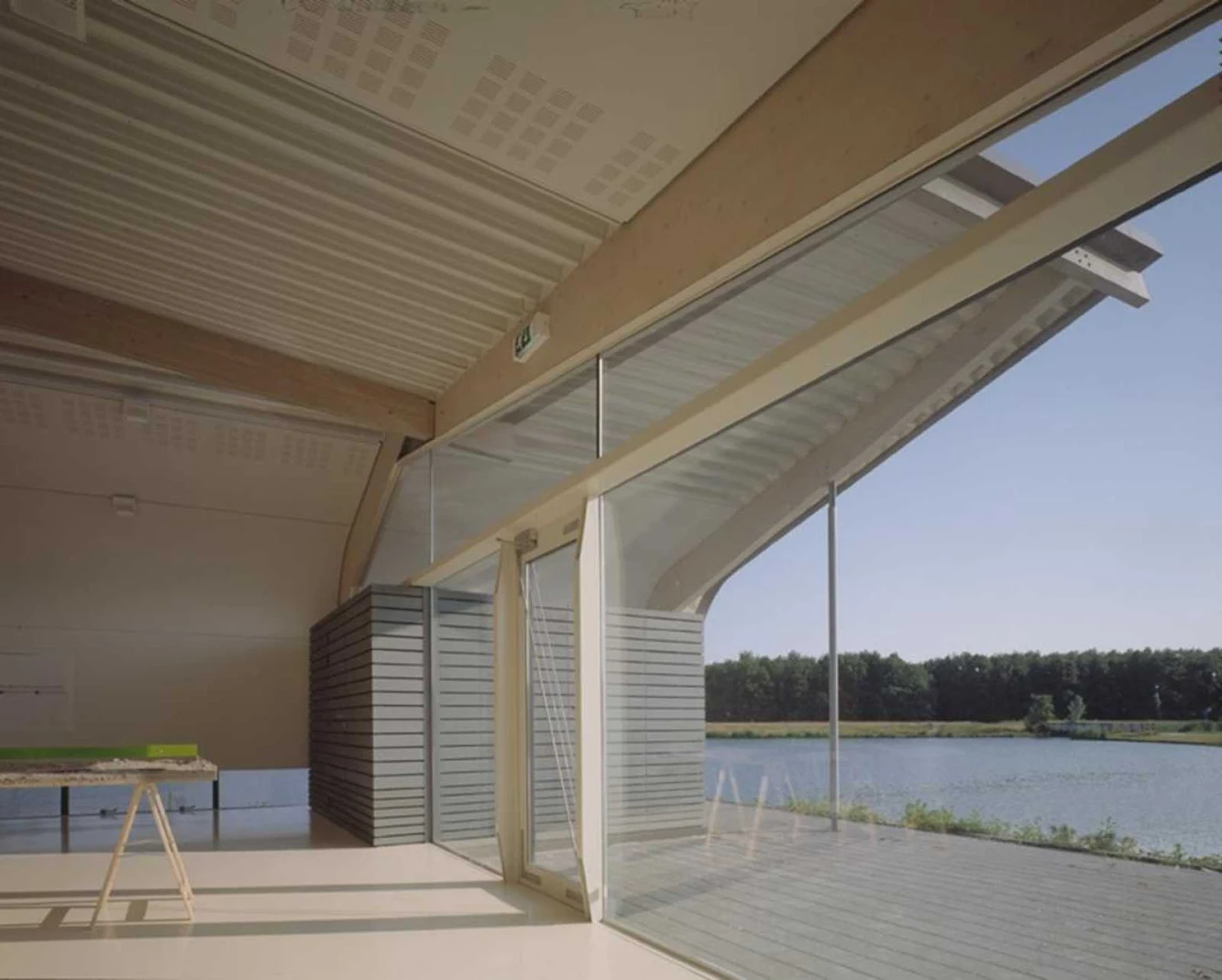
The ‘art-track Zeewolde’ is a seven kilometer route passing through an open-air exhibition of high-quality sculptural art. This sculpture park flows out into a pond that is surrounded by green slopes. in this pond the art pavilion the Imagination is located.

Originally the building was allocated to a spot hidden behind a school and a sports complex. With its final position in the water, at the end of the art-track, the building becomes the organisational nerve centre for events, exhibitions and lectures.

The sculpture Sea Level by the American artist Richard Serra has particularly contributed to the art-track’s reputation. the elongated shape of the pavilion stems from Serra’s long black concrete wall.

Originally the building was allocated to a spot hidden behind a school and a sports complex. With its final position in the water, at the end of the art-track, the building becomes the organisational nerve centre for events, exhibitions and lectures.

The sculpture Sea Level by the American artist Richard Serra has particularly contributed to the art-track’s reputation. the elongated shape of the pavilion stems from Serra’s long black concrete wall.

The limited budget was the occasion for applying a three-hinged frame to construct the span. These originally cheap structures are often used in barns and therefore well-known in the surrounding agricultural polder-landscape.

All the trusses are identical but they are all at a slightly different angle compared to the ground surface. the result is an elegantly twisted roofscape. the same elements that are usually applied for erecting cumbersome storehouses, now make a wavy wrapping.

This subtle rotational algorithm also causes a kind of tectonic fault in the ridge, where the trusses (almost) meet. the arm of one truss is connected to the tip of the other. the shifted roof surfaces subsequently provide indirect daylight incidence. the roof is constructed of a profiled steel roof sheet, cladded with corrugated aluminium on the exterior.

Inside the steel sheets are partly covered with gypsum plasterboard. Both the interior materials are partially perforated to ensure appropriate acoustics. the utilitarian spaces like offices, rest rooms, storage and a little library are slided into the main volume as two autonomous wooden boxes.

On the ground floor level a glass strip is applied as a transparent plinth. This apparently lifts the building of the ground level and contributes to its airy character. the pavilion is located on a narrow peninsula concluded on both sides by a steep slope. the ambient view on the water through the glass plinth evokes a sense of floating.


Location: Zeewolde, Holland Architects: René van Zuuk Architects Structural Engineer: Van de Laar Building Contractor: Kingma Bouw Area: 375 m2 Costs: € 400.000 Year: 2001 Client: Foundation – De Verbeelding – art landscape naturePhotographs: Christian Richters